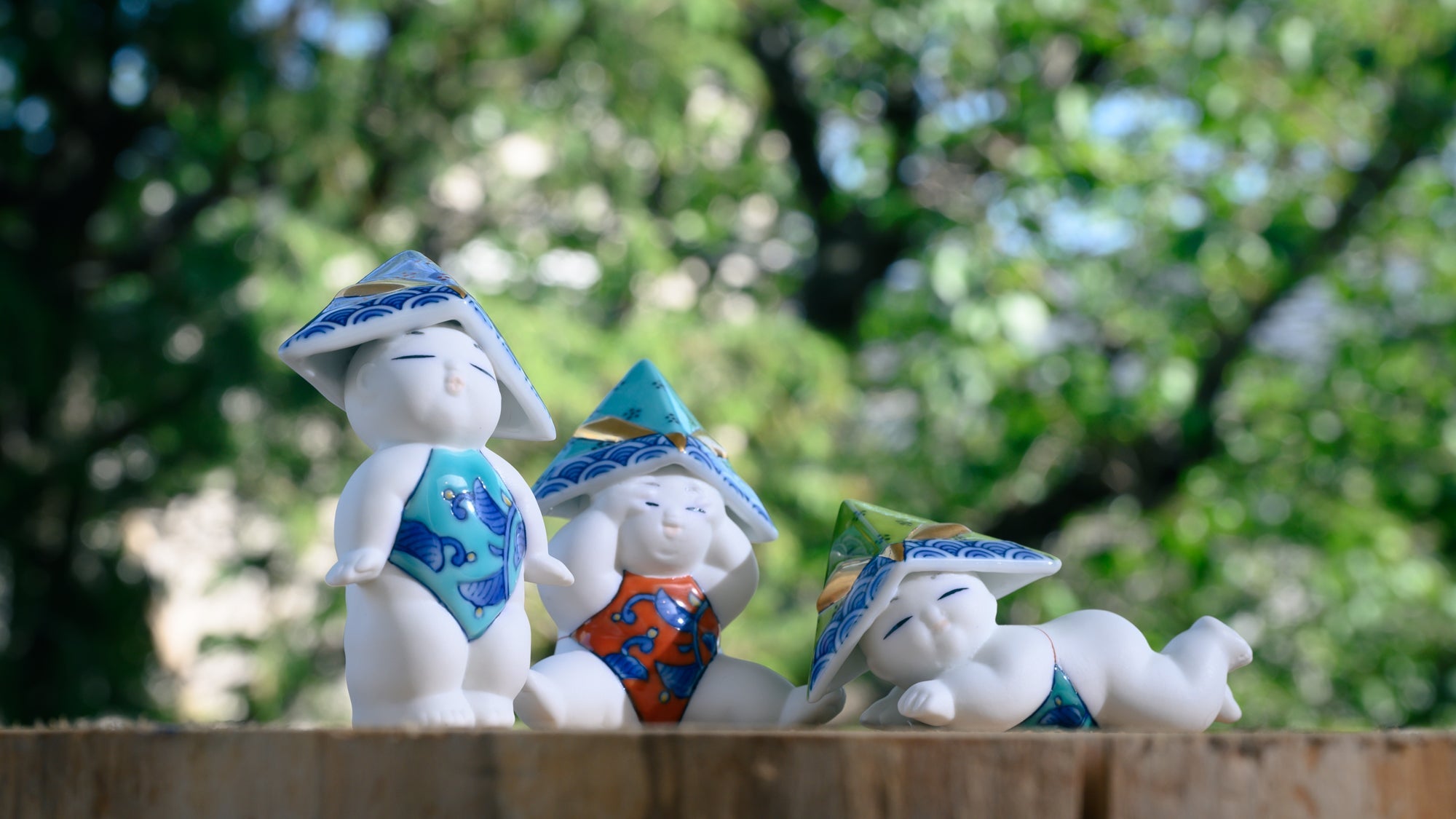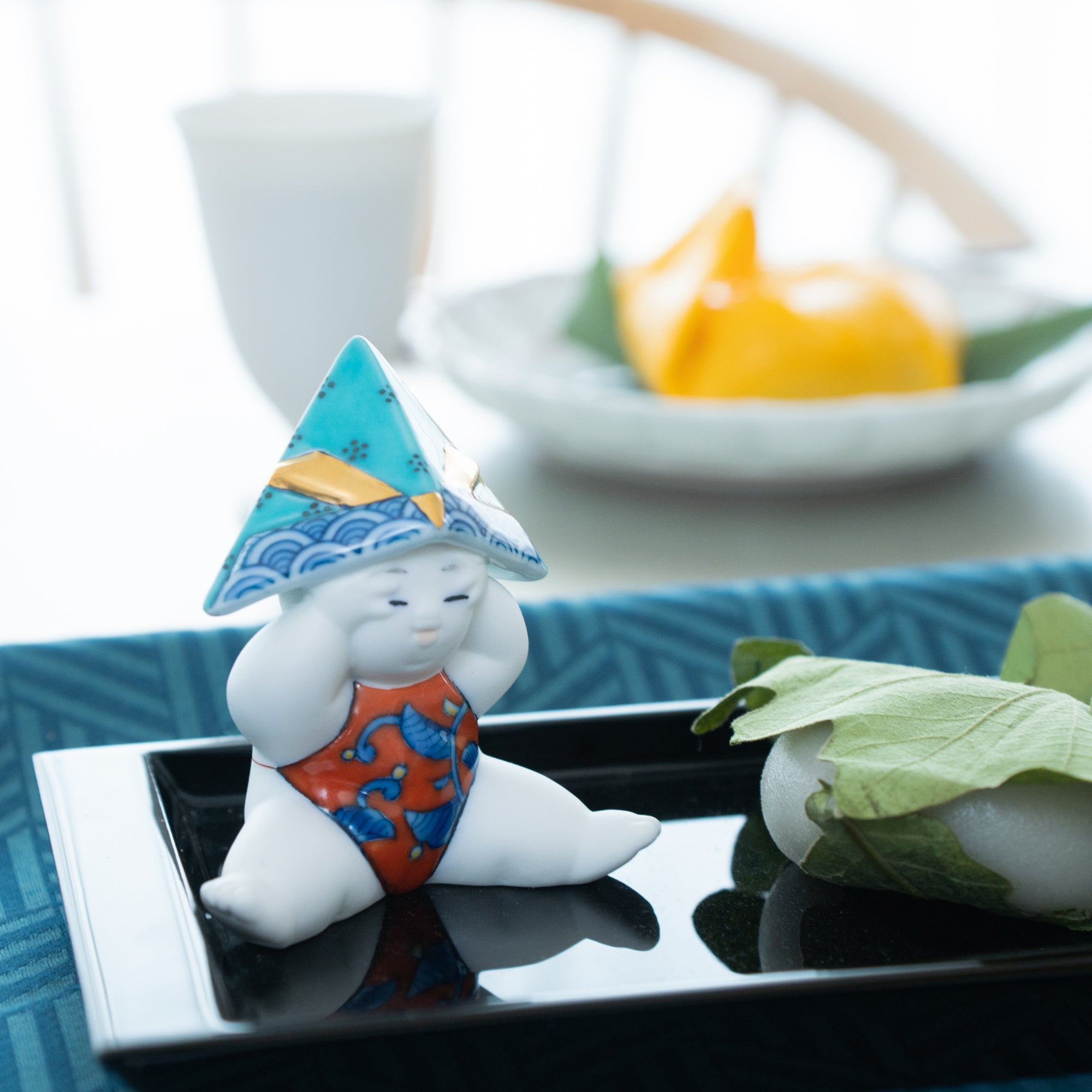
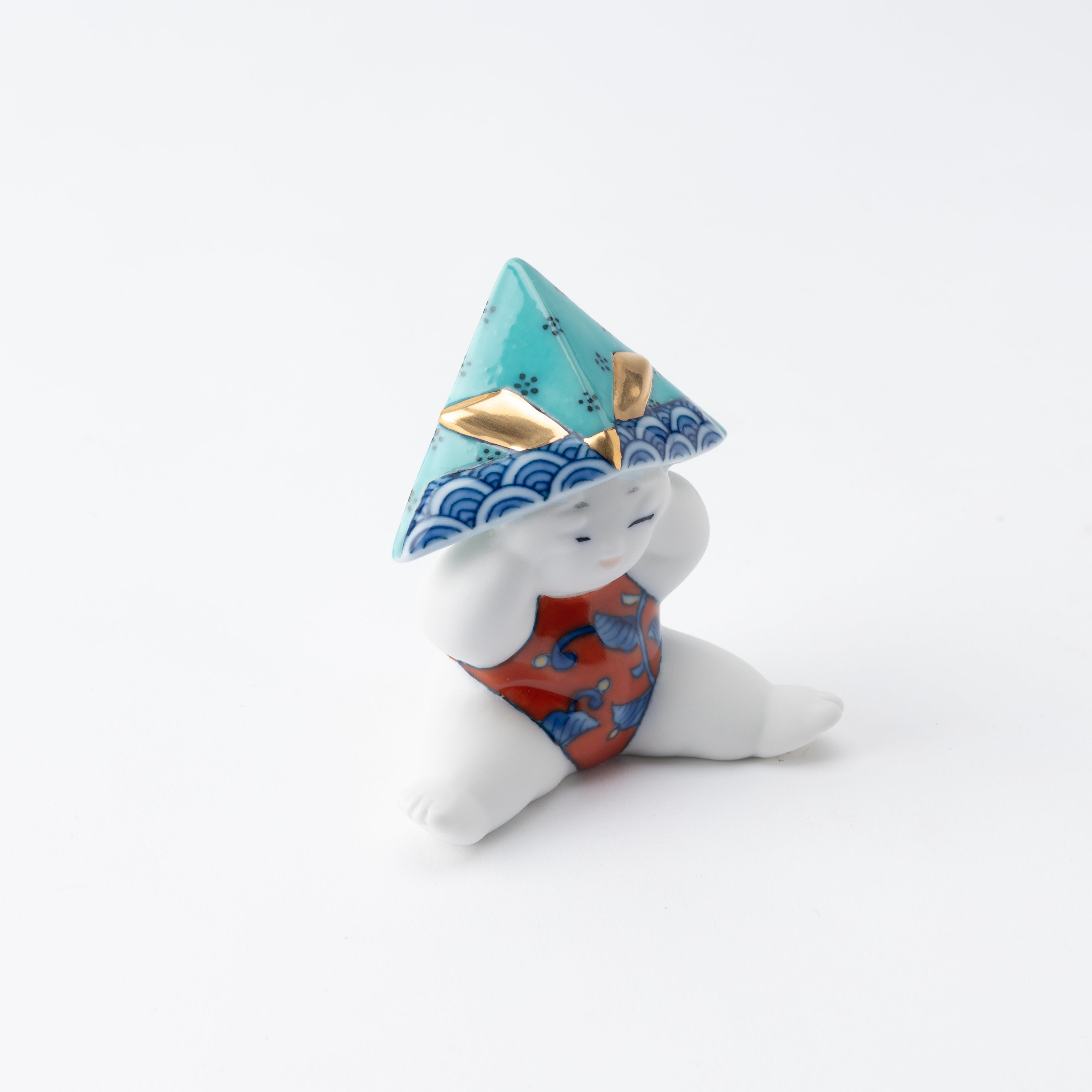
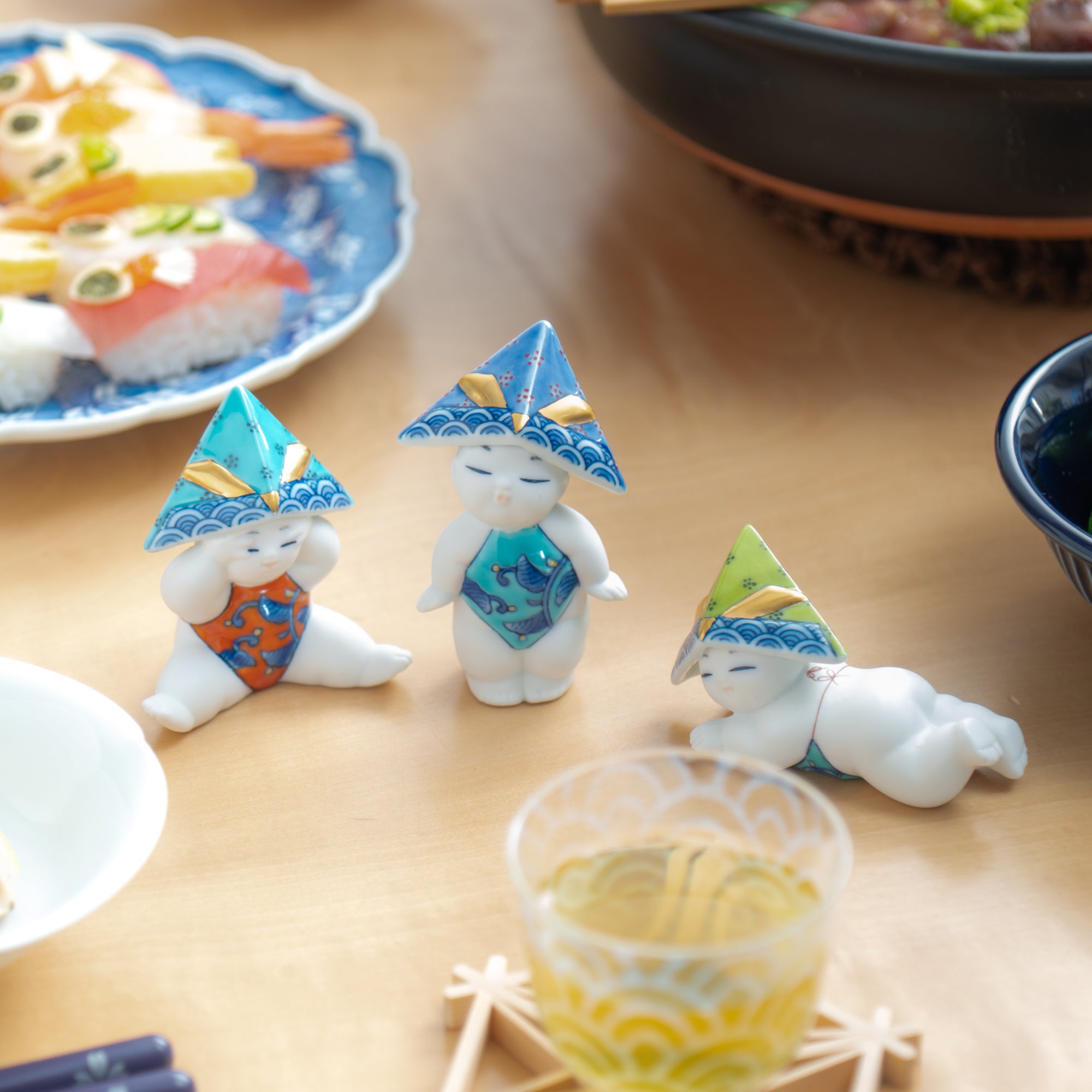
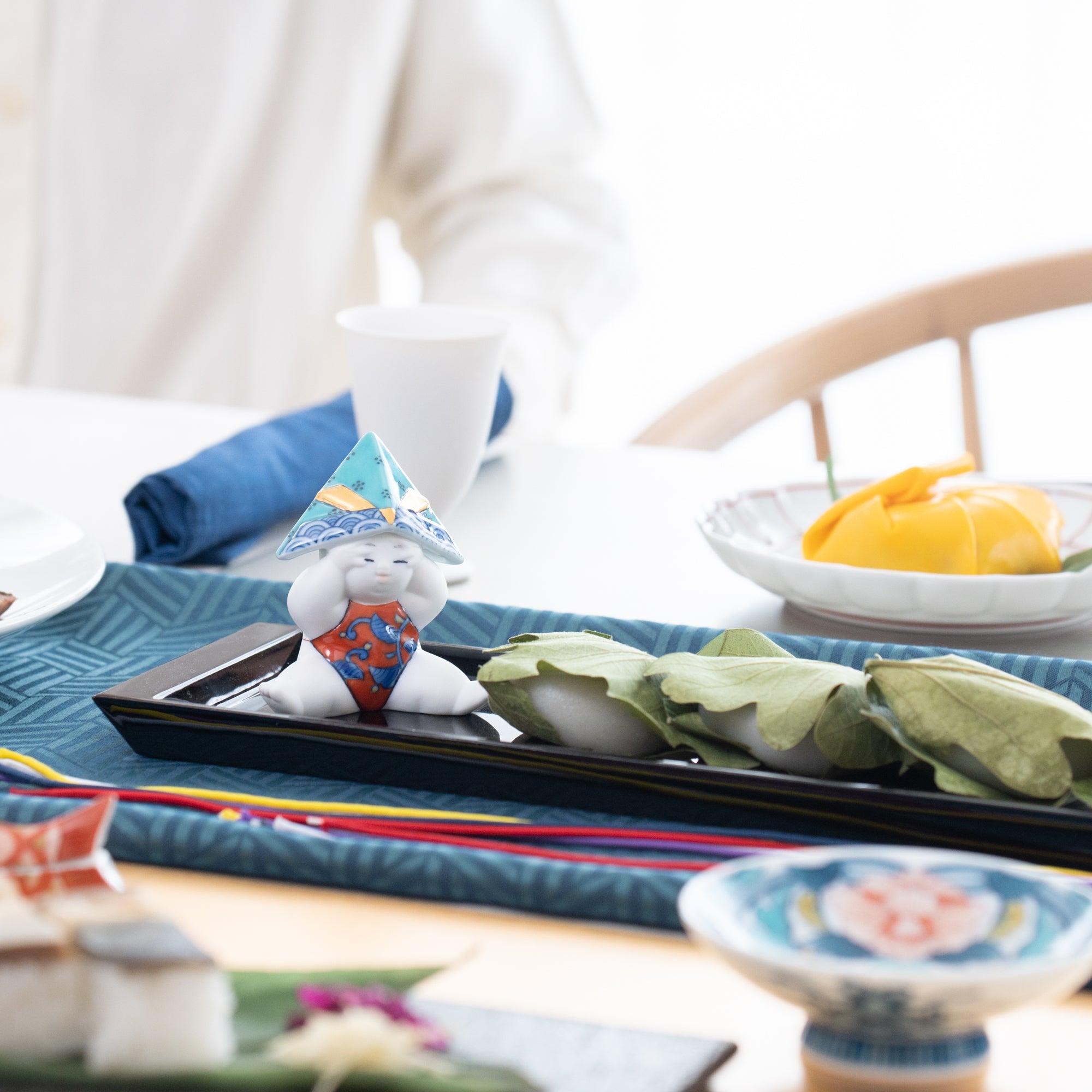
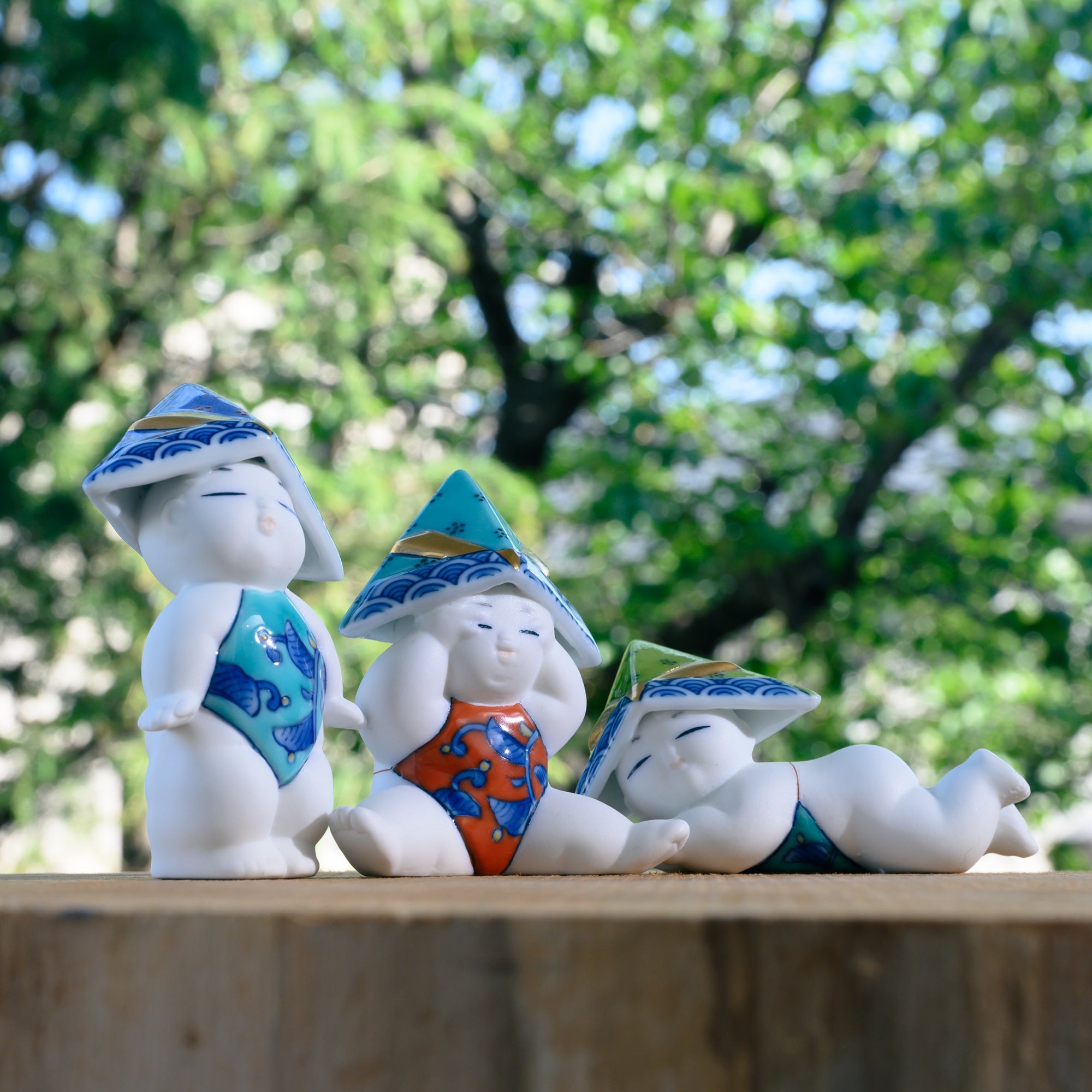
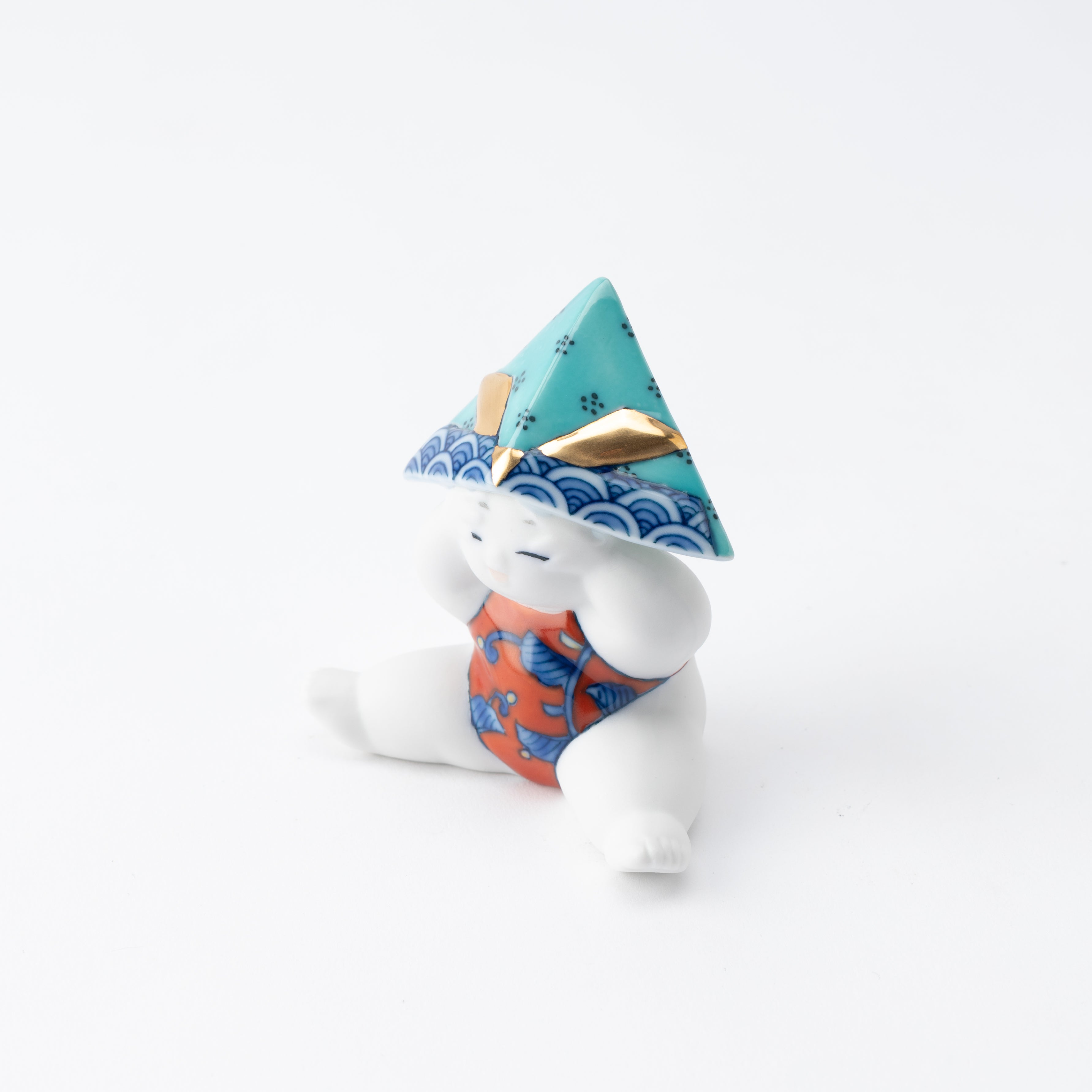
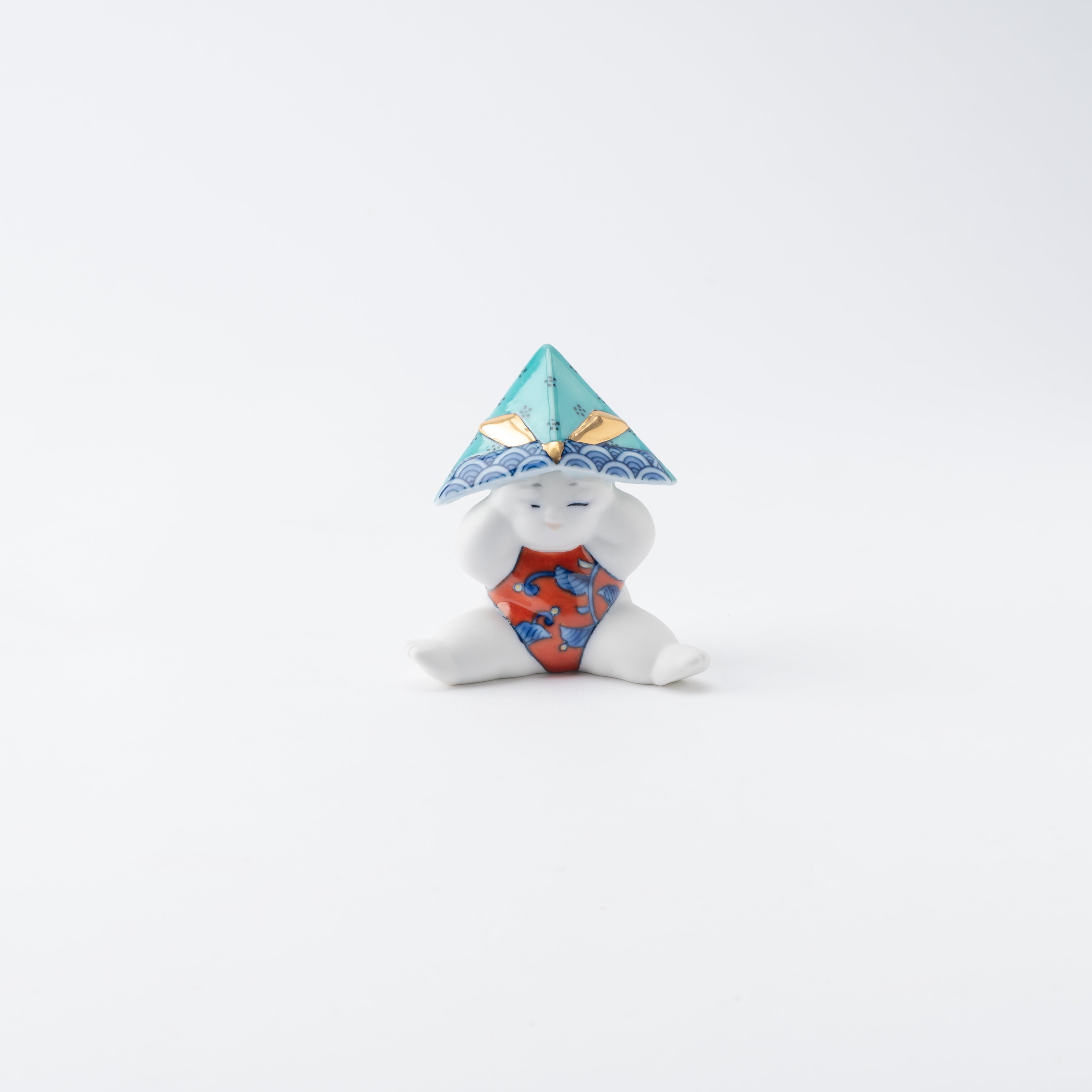
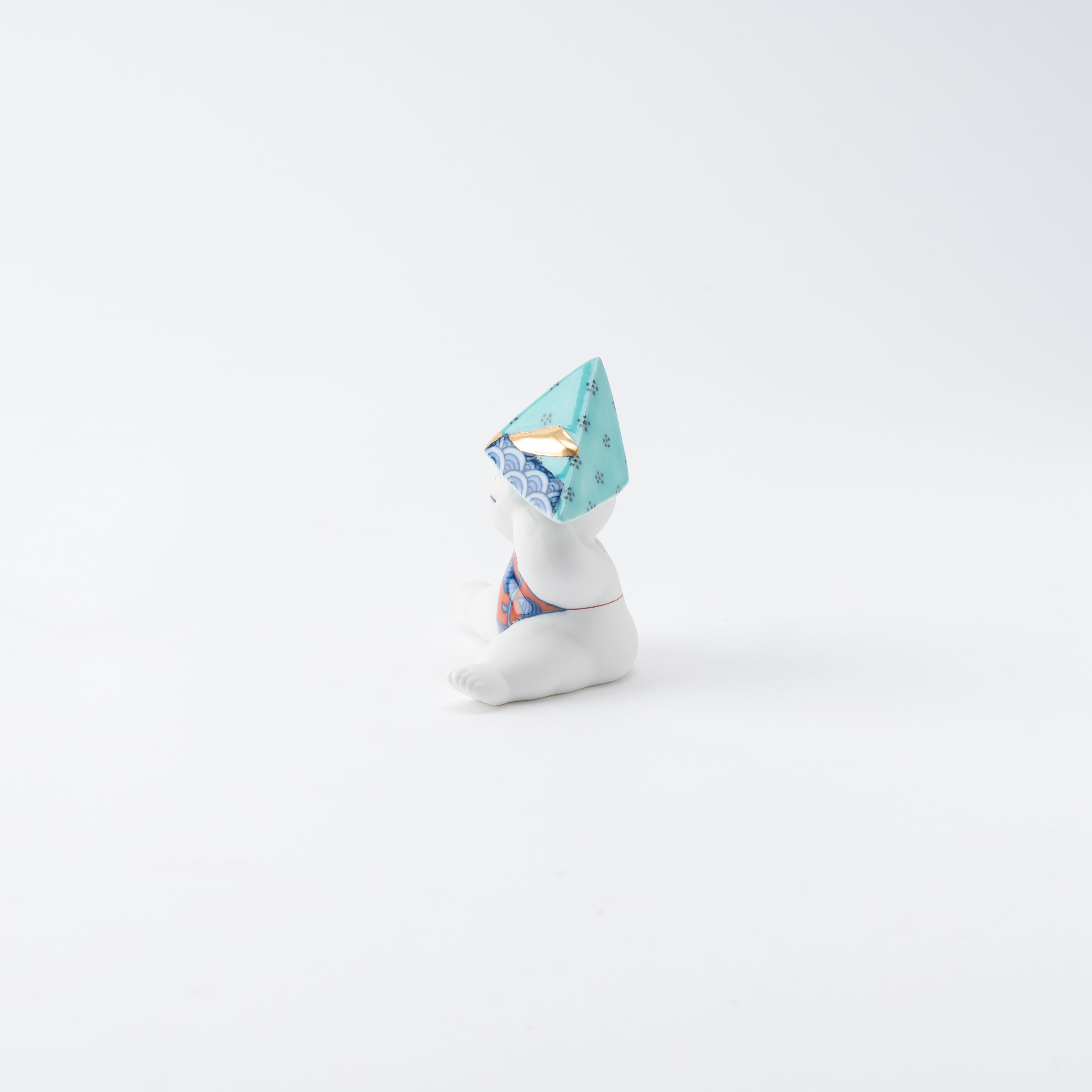
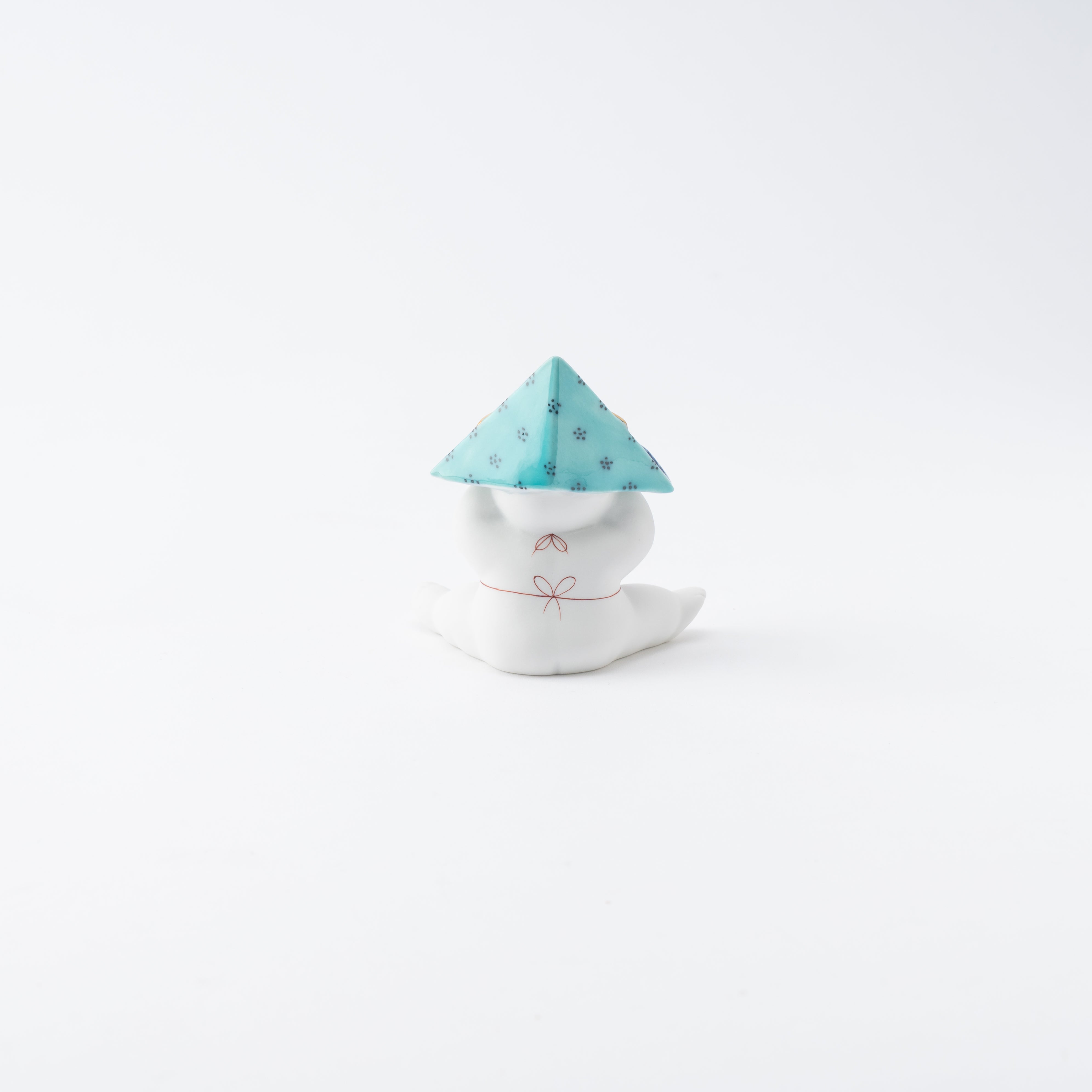
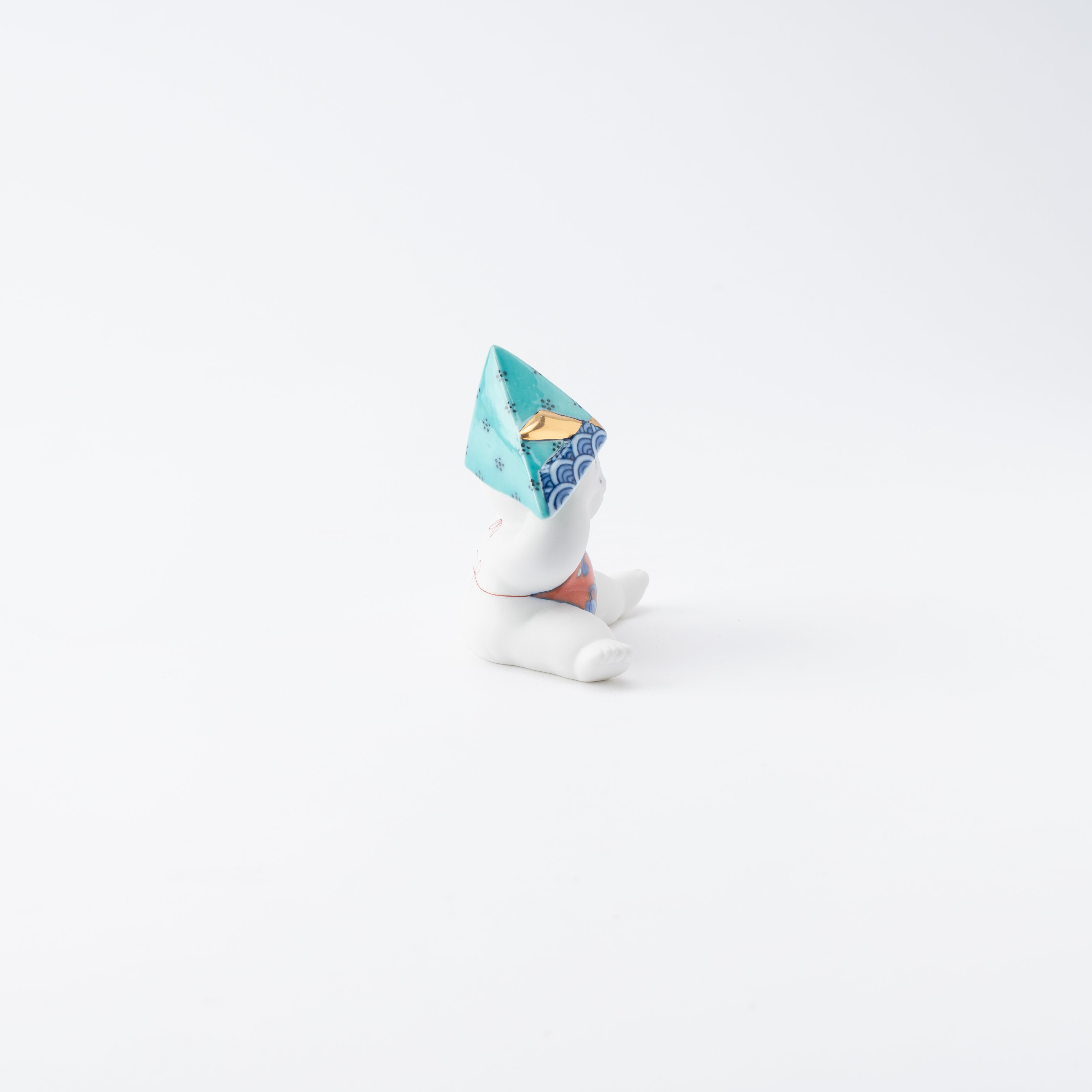
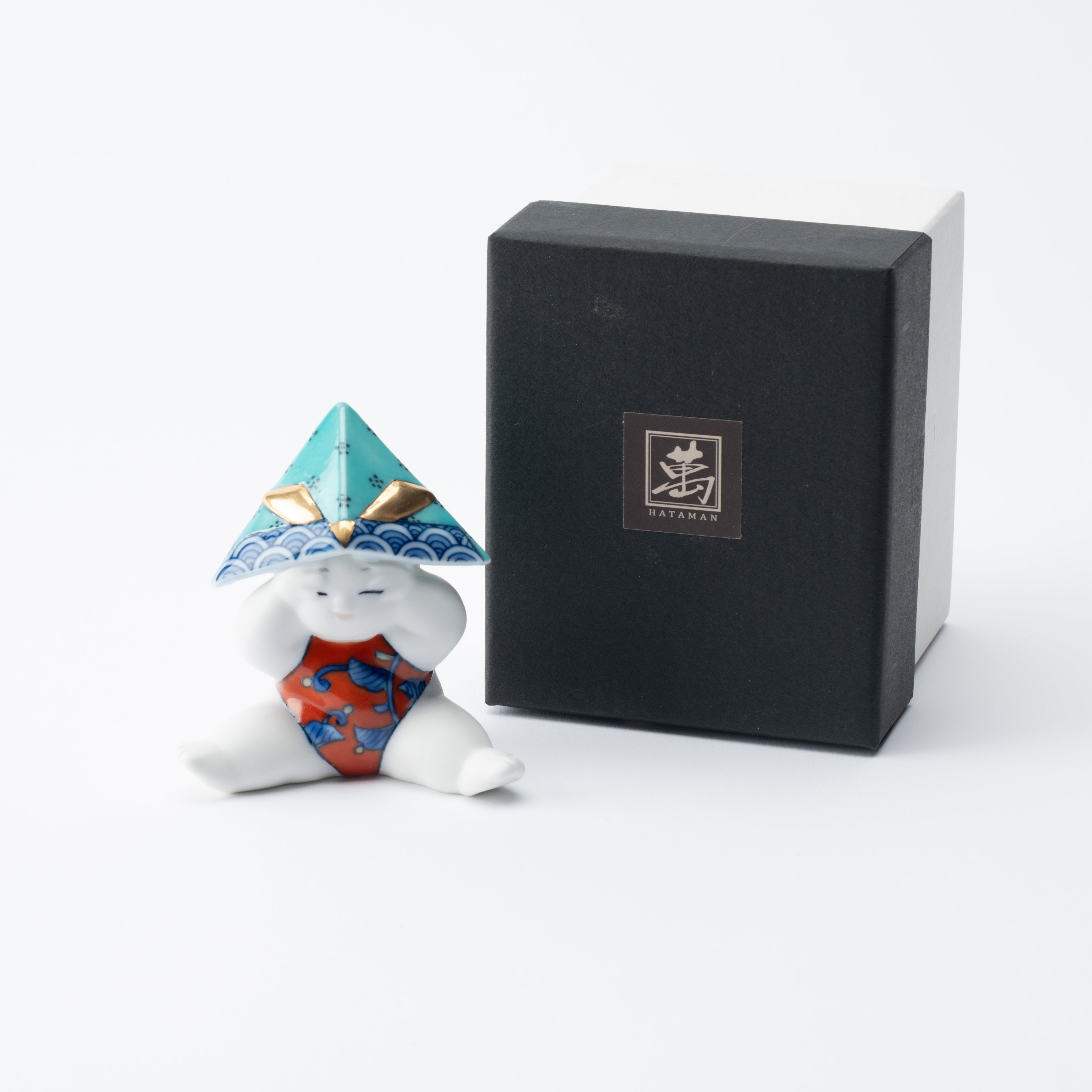
Boys' Festival Small Sitting Gosho Doll
Estimated Shipping Widget will be displayed here!
This adorable doll is made in the image of a gosho doll which was a type of doll favored by the court nobles of ancient Kyoto. These dolls are characterized by their large, rounded heads, and chubby little bodies which reflect the aesthetic valued during the Edo period (1603–1868 CE).
The sitting doll is posing with short legs stretched out and his arms cutely reaching out for his helmet. His translucent white skin is beautifully created with unglazed porcelain lending an air of realism.
The green warrior helmet worn by the doll is decorated with plum blossoms and seigaiha "wave" patterns, symbolizing good fortune. The serene and innocent expression and other decorations are all hand-painted by skilled craftsmen at Hataman Touen's studio. His red apron and neatly tied ribbon add to the loveliness of this small doll.
Originally, on Tango-no-Sekku (also known as Boys' Day), one of the five seasonal festivals from ancient China, it was customary to display decorations and offerings to drive away evil spirits and wish for good health. And following this custom, dolls with warrior helmets or just the helmets are now displayed in homes to wish for the healthy growth of children.
DETAILS
| Quantity | 1 |
| Size | L 3.5 cm (1.4 in) x W 7 cm (2.8 in) x H 8 cm (3.1 in) |
| Material | Porcelain |
| Package Type | Paper box |
| Microwave | No |
| Dishwasher | No |
Maker / Brand
Hataman Touen inherits the rich history and techniques of Imari Nabeshima ware, a tradition spanning 370 years, while embracing the spirit of Japanese culture that enriches the heart and soul. They aim to embody Japanese aesthetics in a modern context and share their story and products with the world.
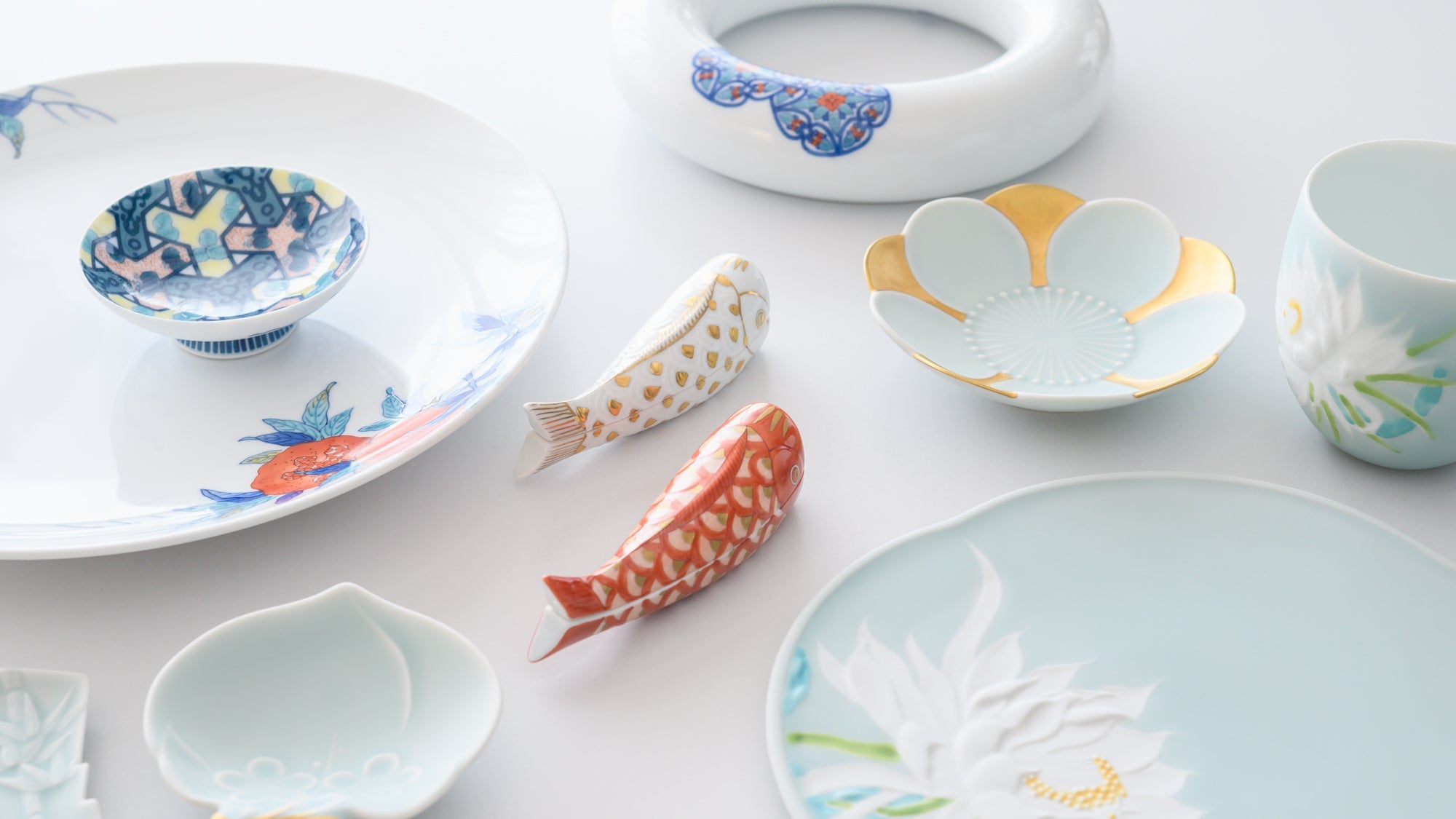
Crafts
Nabeshima ware is a type of porcelain crafted at the meticulously managed Nabeshima domain kiln. This kiln, which operated as a government-run project under the direct supervision of the Saga Nabeshima domain, flourished during the early Edo period (1603–1868 CE).
For approximately 250 years, Nabeshima ware was reserved solely and exclusively for shoguns and feudal lords, with the kilns producing exquisite pieces in styles like iro-Nabeshima (overglaze enamel), ai-Nabeshima (sometsuke), and Nabeshima seiji (celadon). After the feudal system ended, the kilns were privatized, welcoming new potters and giving rise to what is now known as Imari Nabeshima ware.
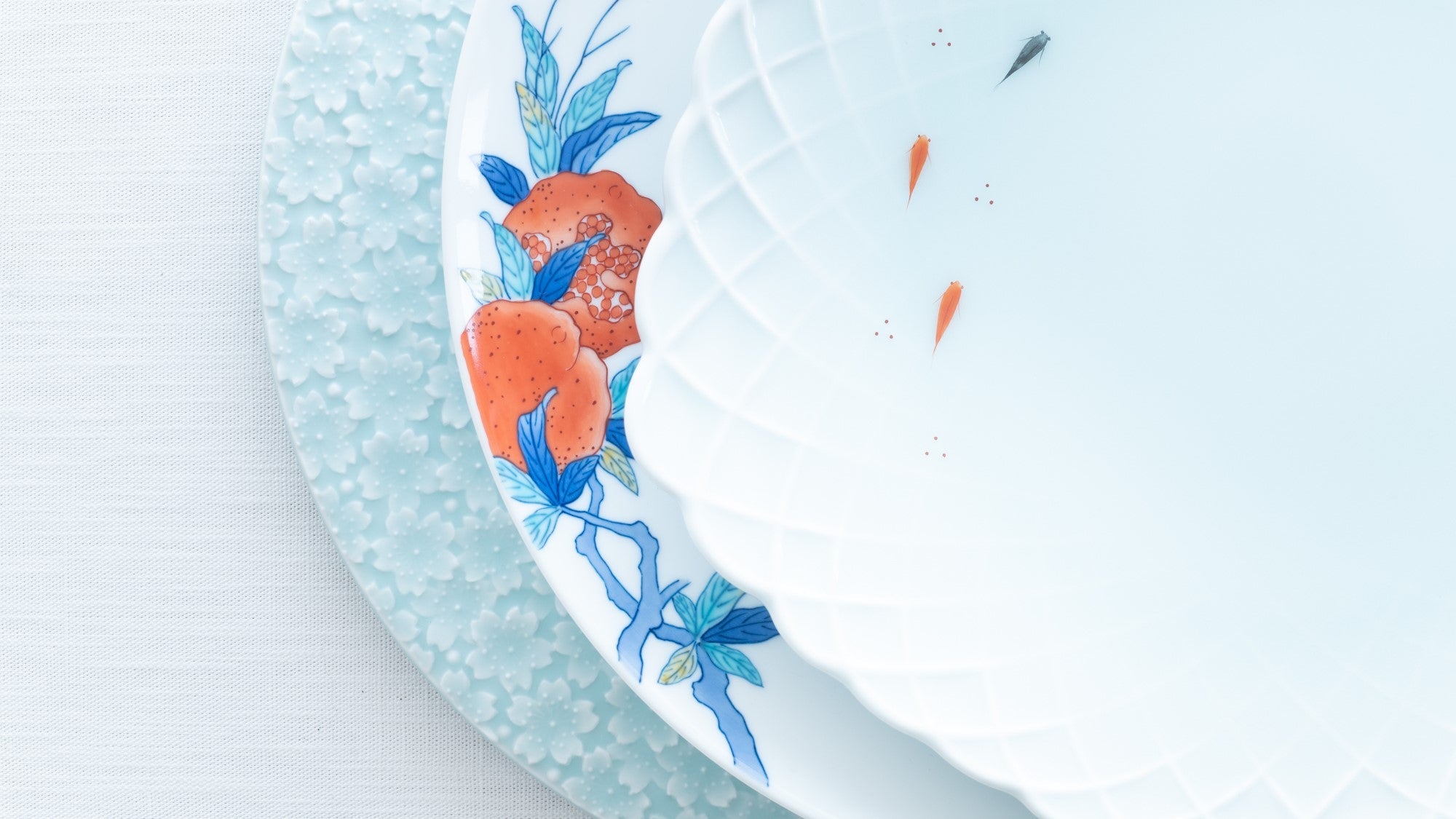
Choose options











Estimated Shipping Widget will be displayed here!
Japanese Dolls & Decor
Experience the timeless charm of Japanese dolls and Japanese figurines, symbols of cultural heritage and artistic craftsmanship that have been cherished for generations. Our curated collection of Japanese dolls showcases exquisite hand-painted details, elegant silhouettes, and the storied traditions that inspire their creation.
Each figurine transforms any space into a corner of refined beauty, inviting a deeper appreciation for the craftsmanship and history that make these Japanese doll treasures so enchanting. Whether you’re a seasoned collector or discovering these cultural icons for the first time, our selection promises to connect you with the enduring spirit and serenity of Japan.
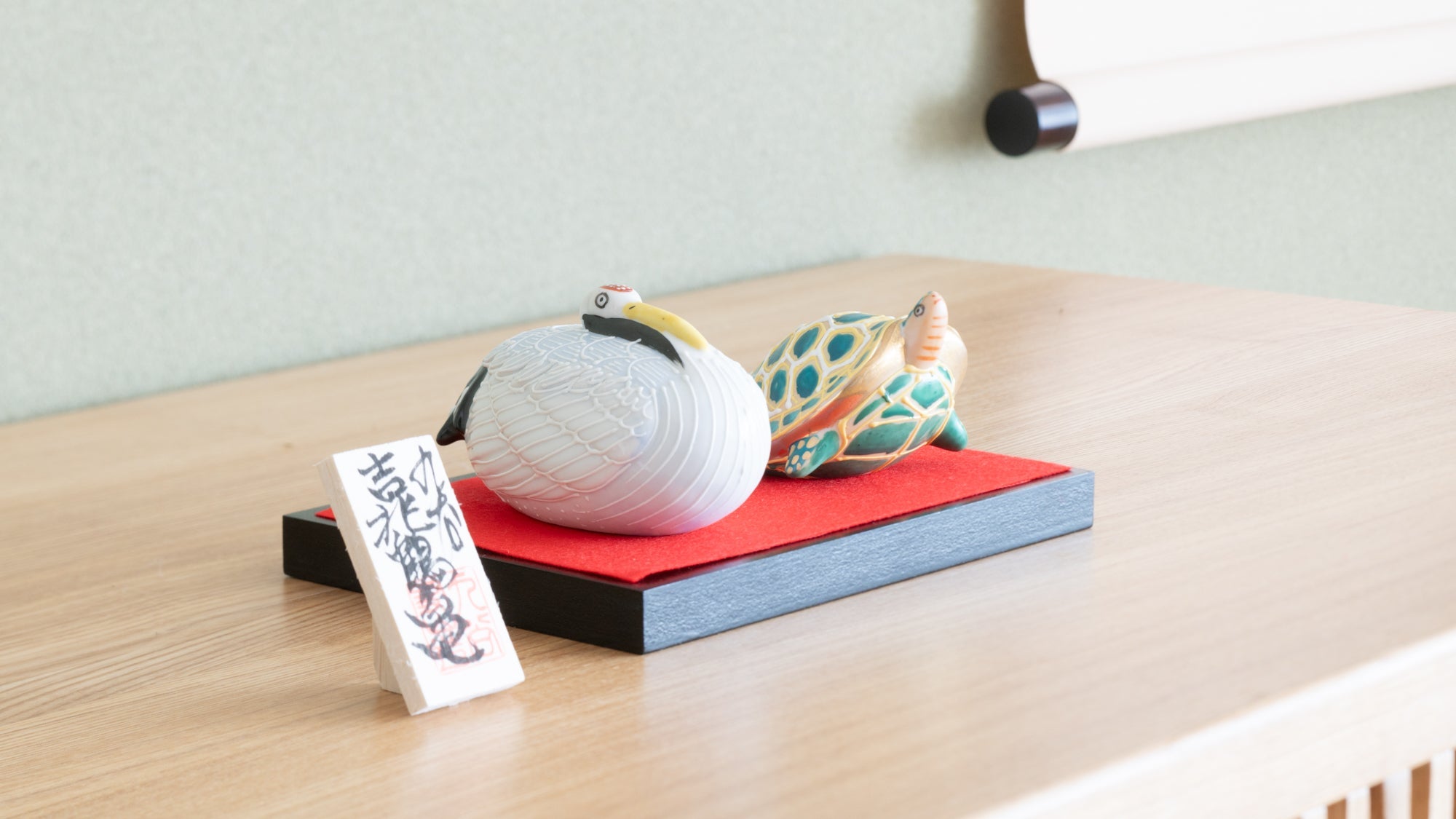
May Festival Dolls
May Festival Dolls are dolls used to celebrate Tango-no-Sekku, also known as Children's Day or Boy's Day. The tradition originated in the Nara period (710 CE–794 CE). By the Edo period (1603 CE–1868 CE), May 5th had become a holiday and was established as Tango-no-Sekku. During this period, the festival became widely celebrated among the common people of Edo, and dolls began to be used as decorations.
The placement of these dolls signifies the family's collective celebration of a boy's birth, embodying hopes for the child to avoid illnesses, accidents, and other misfortunes, and to grow up strong and healthy. Armors and helmets are displayed as talismans for bodily protection, expressing wishes for their safety, health, and robust growth.
